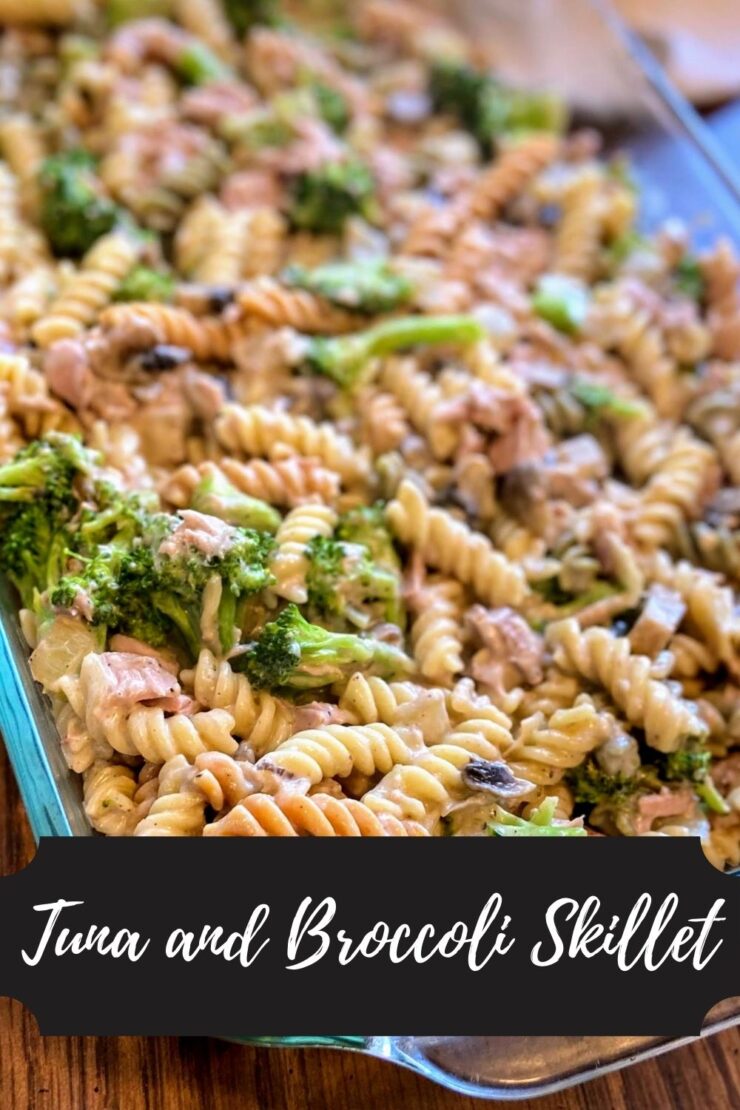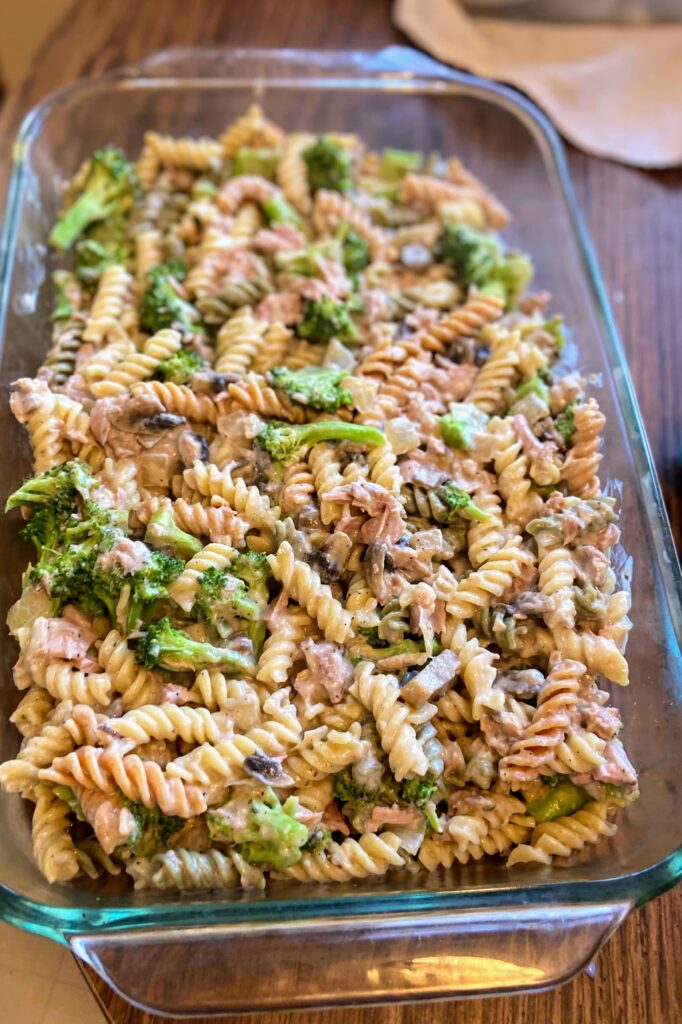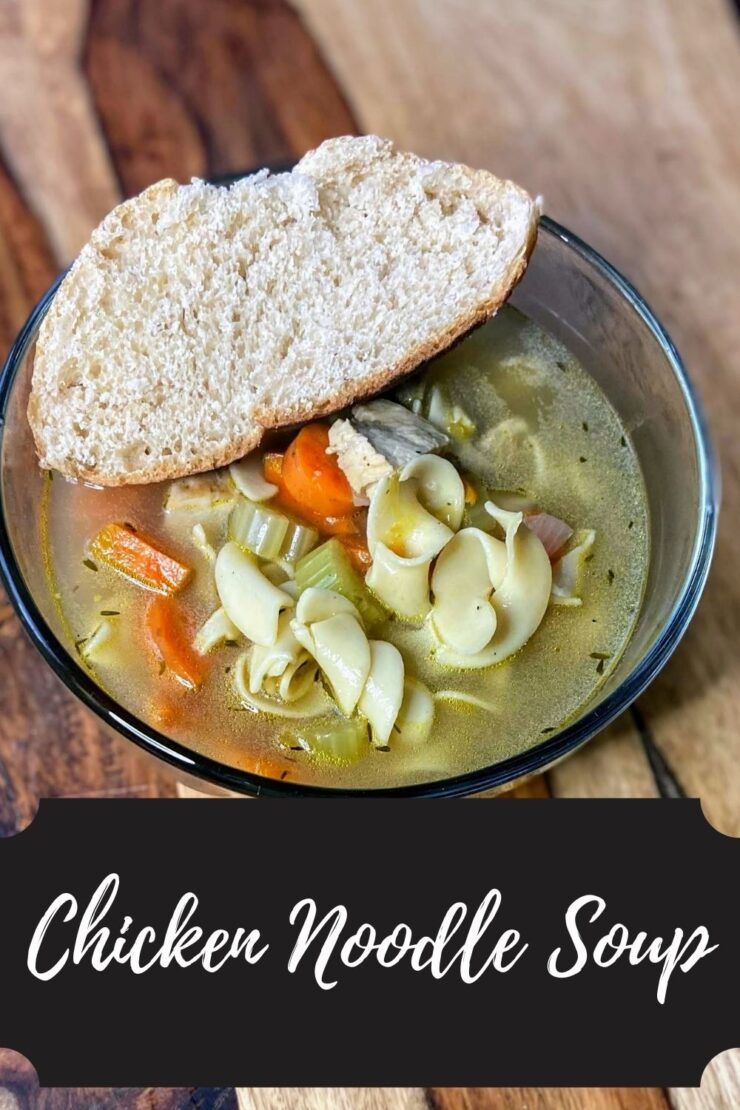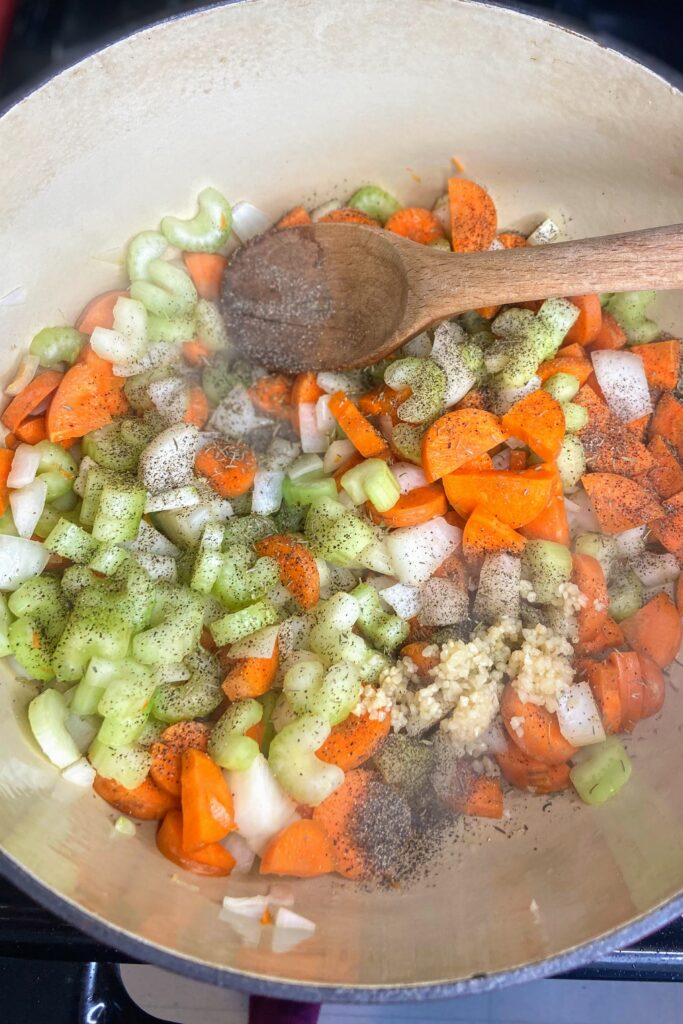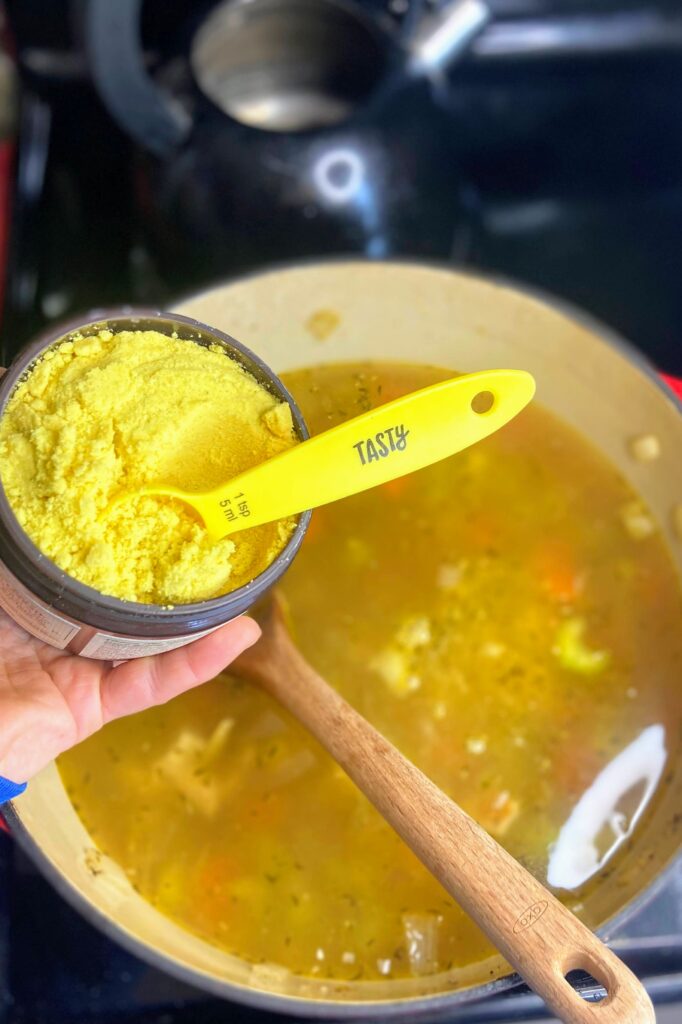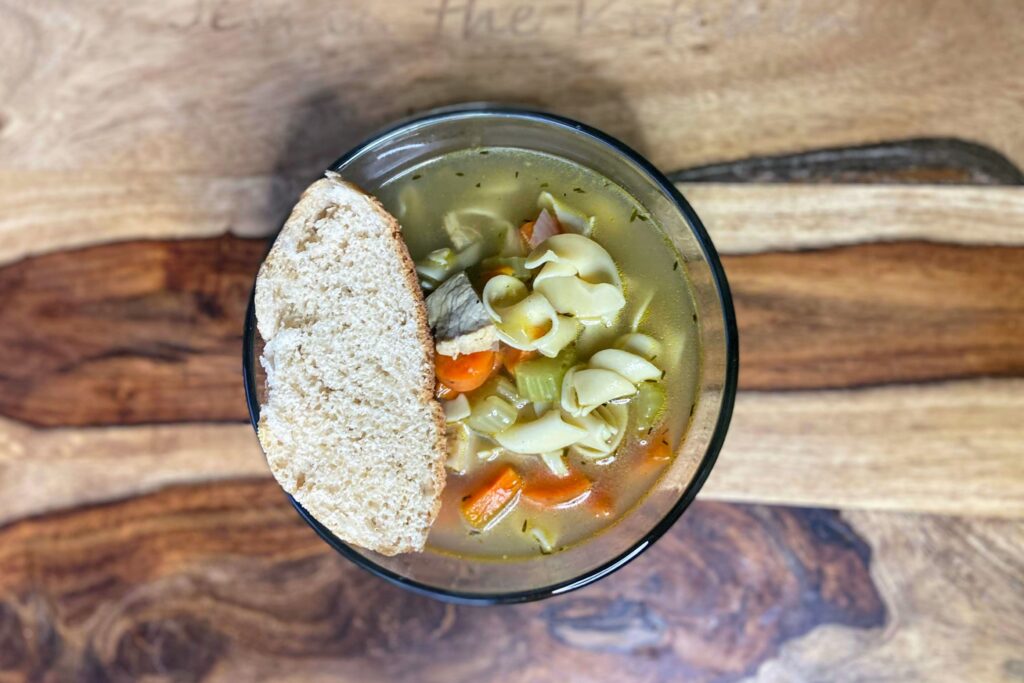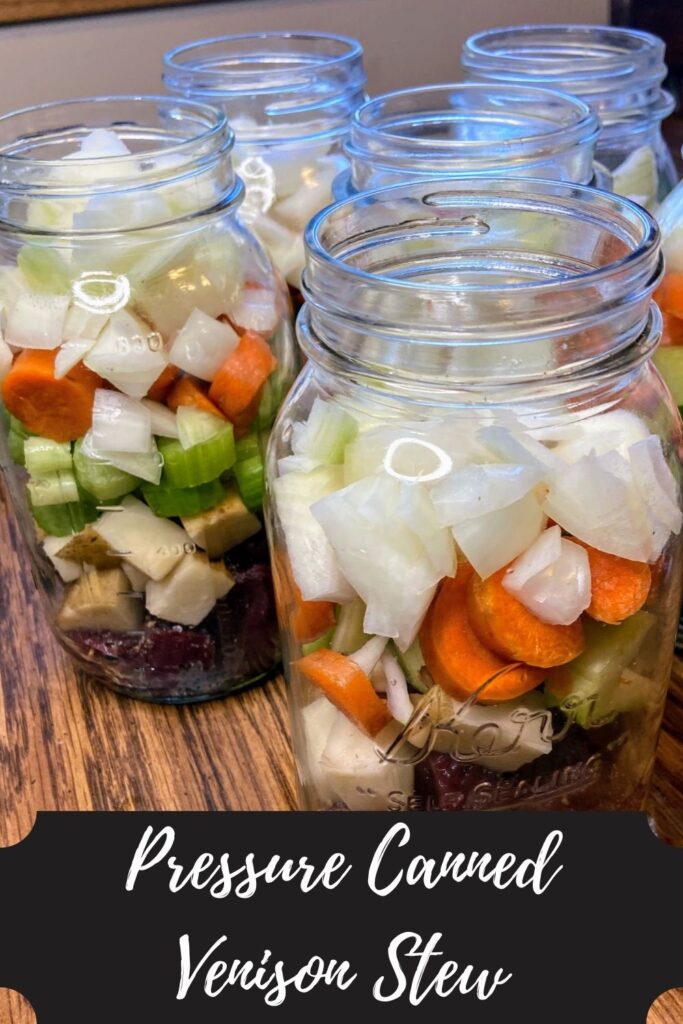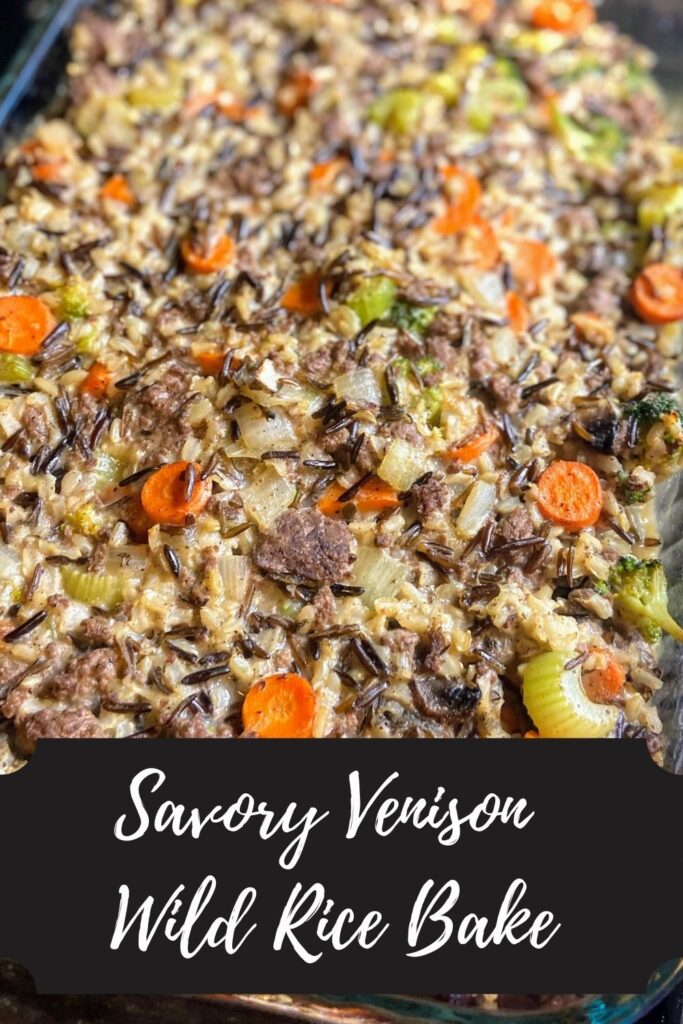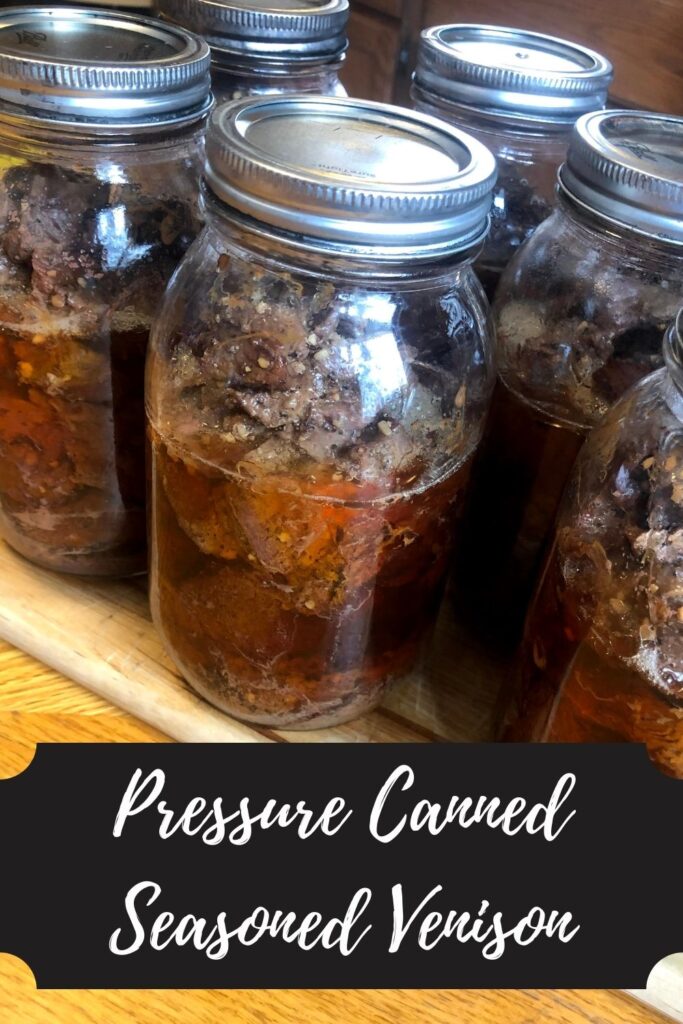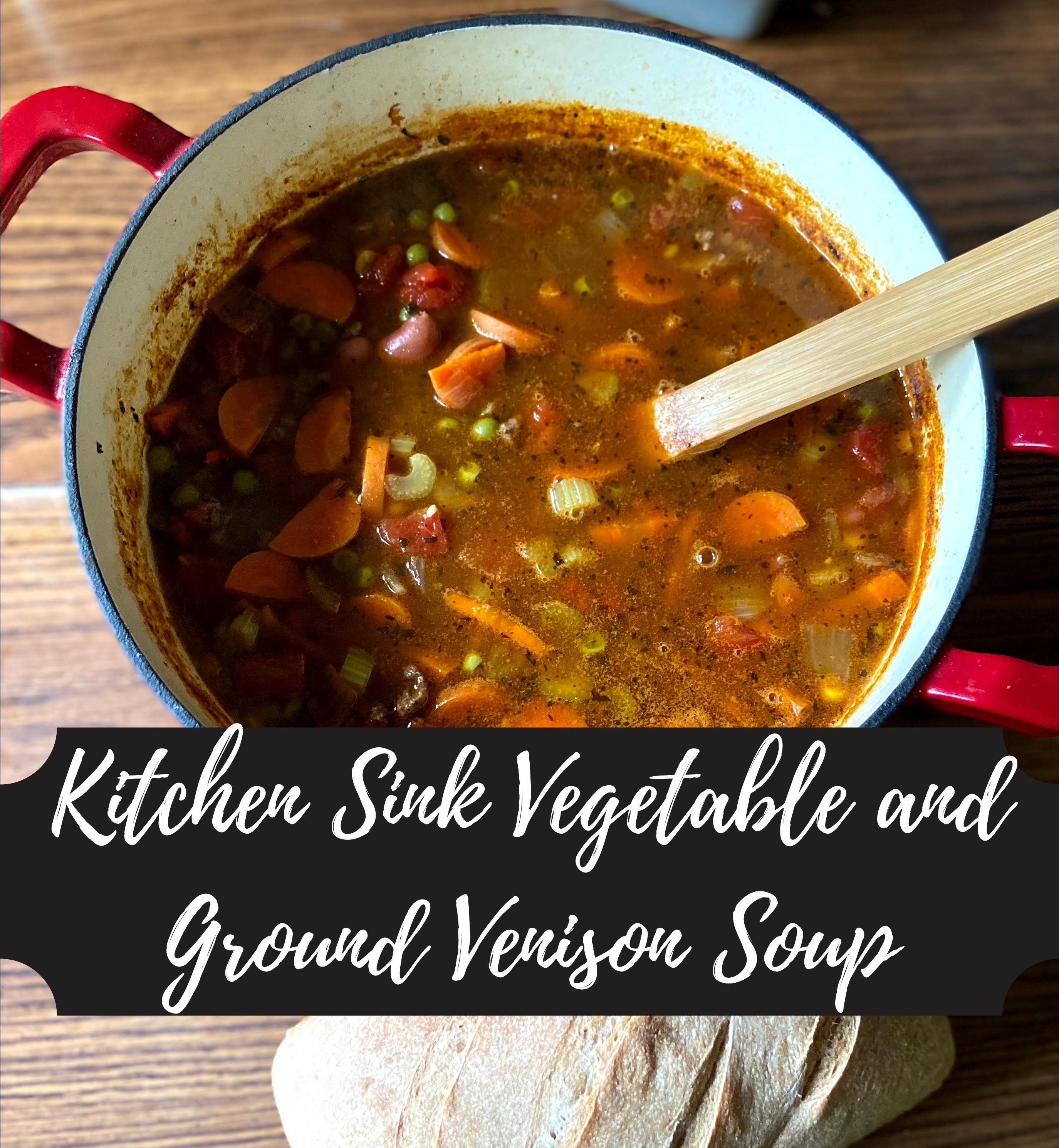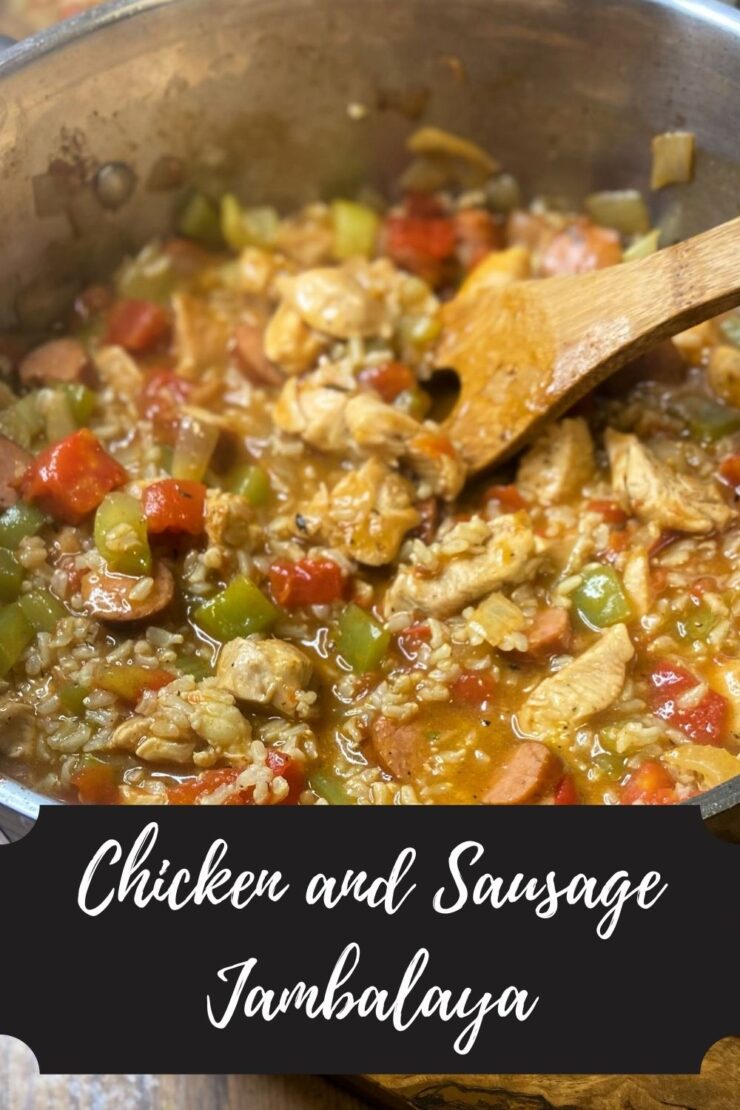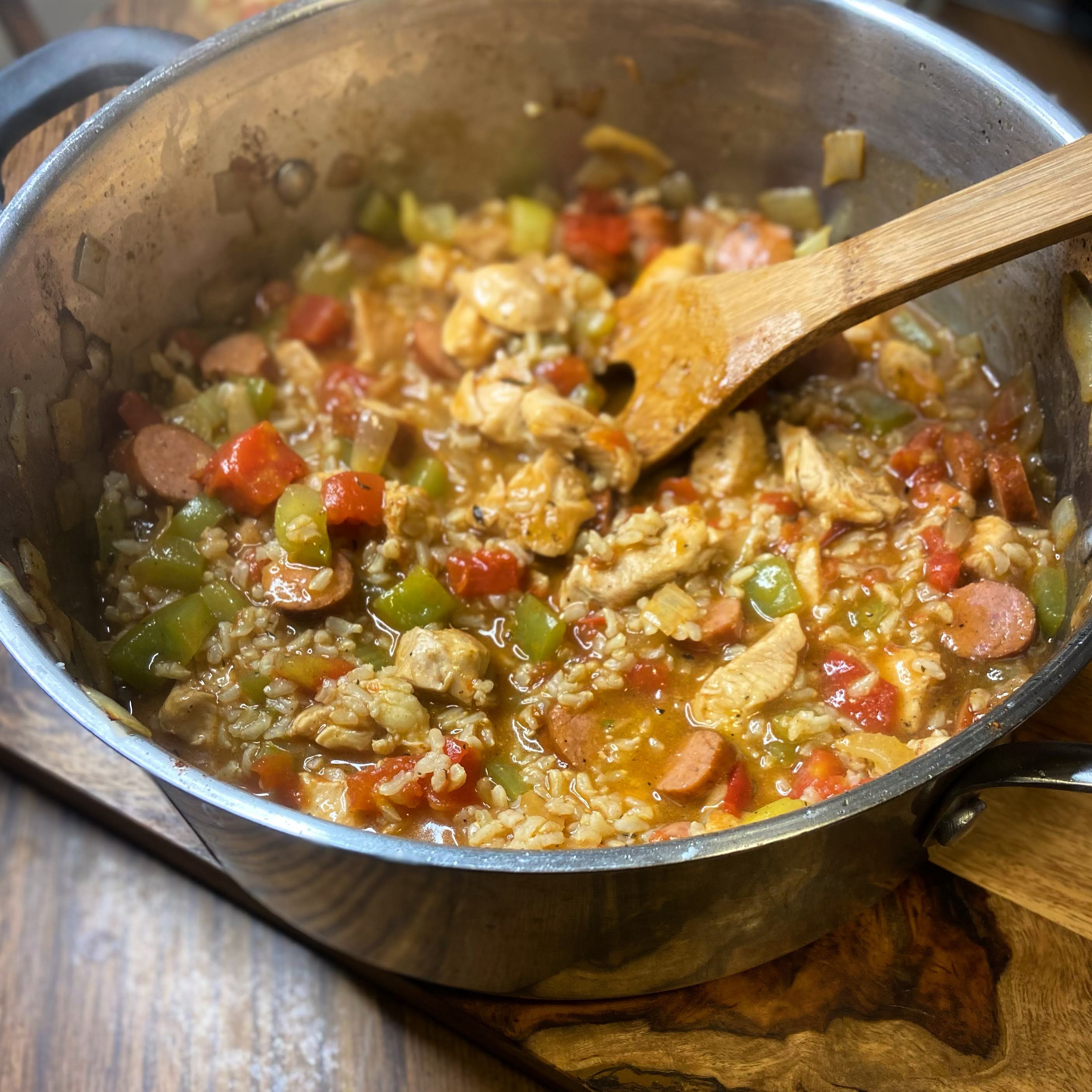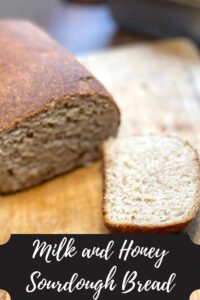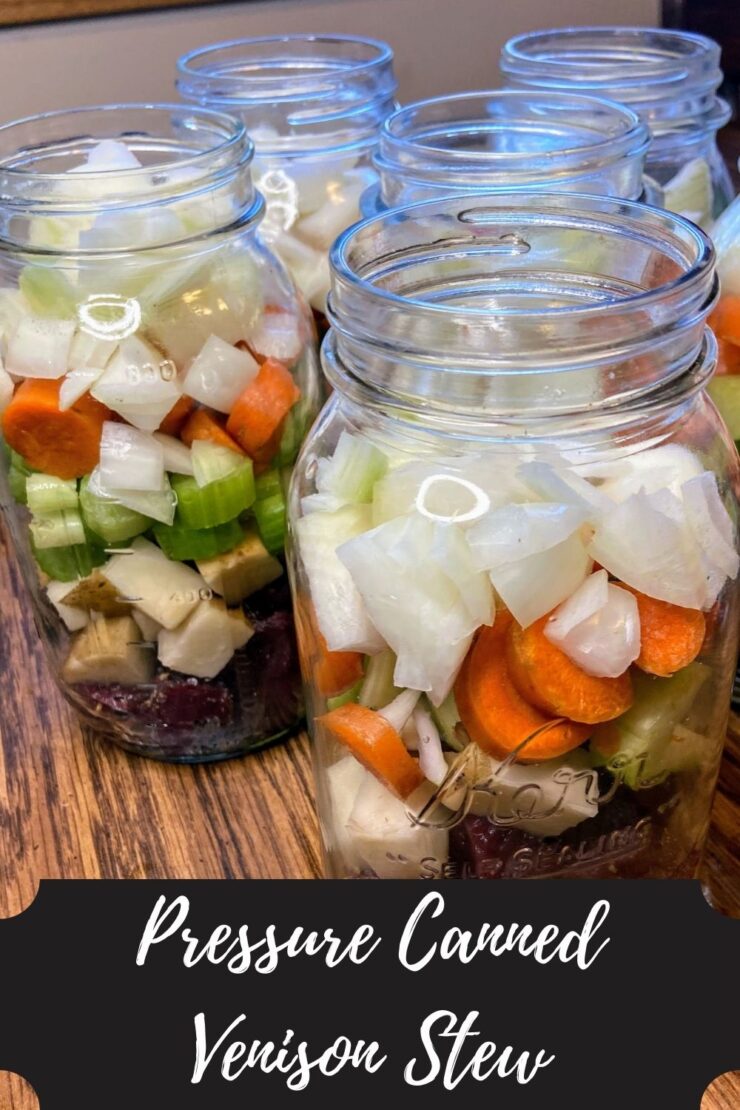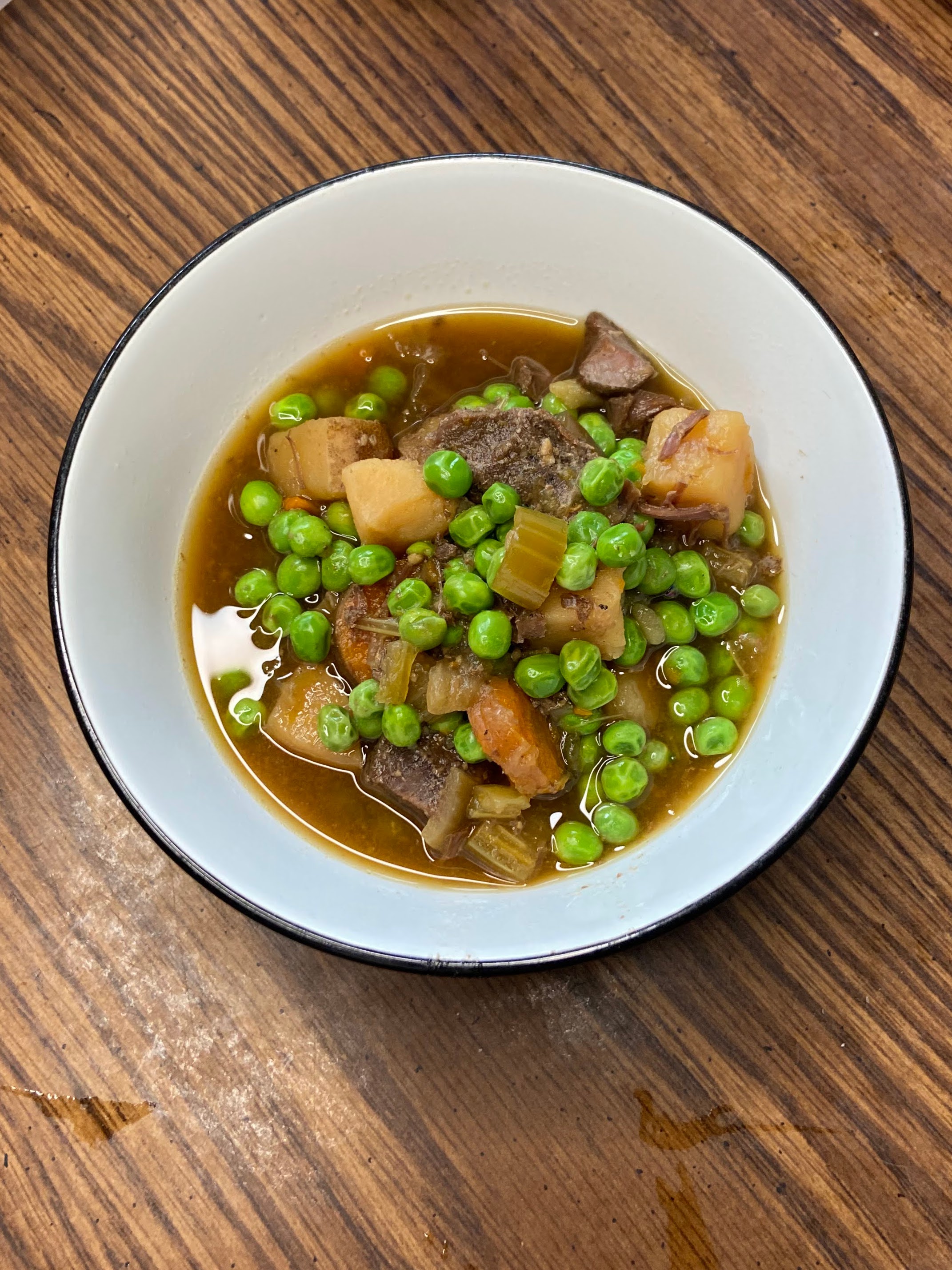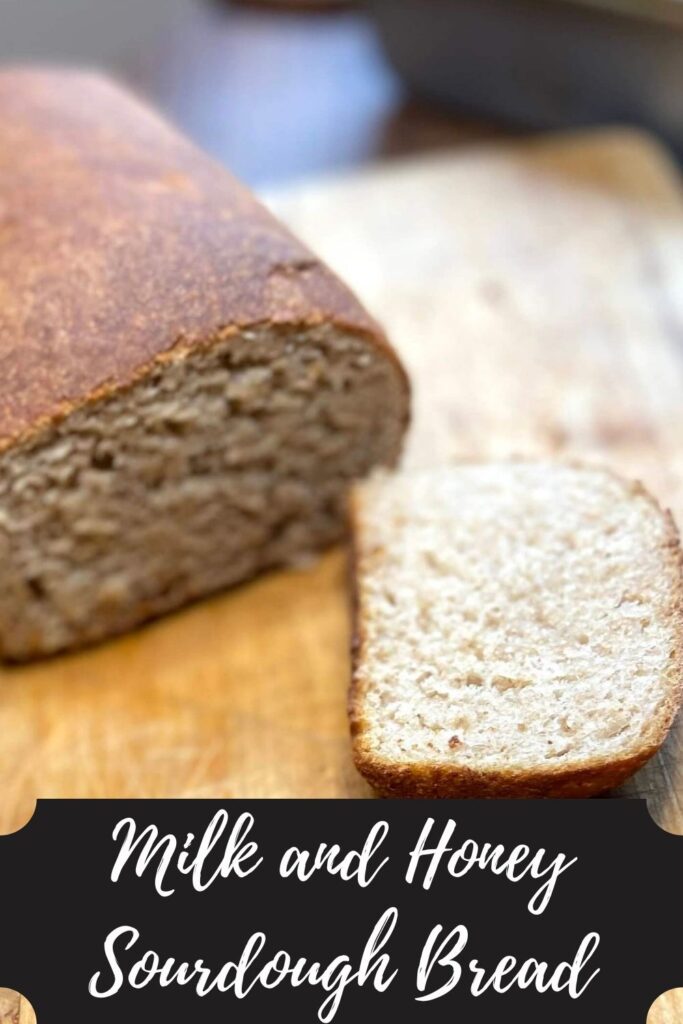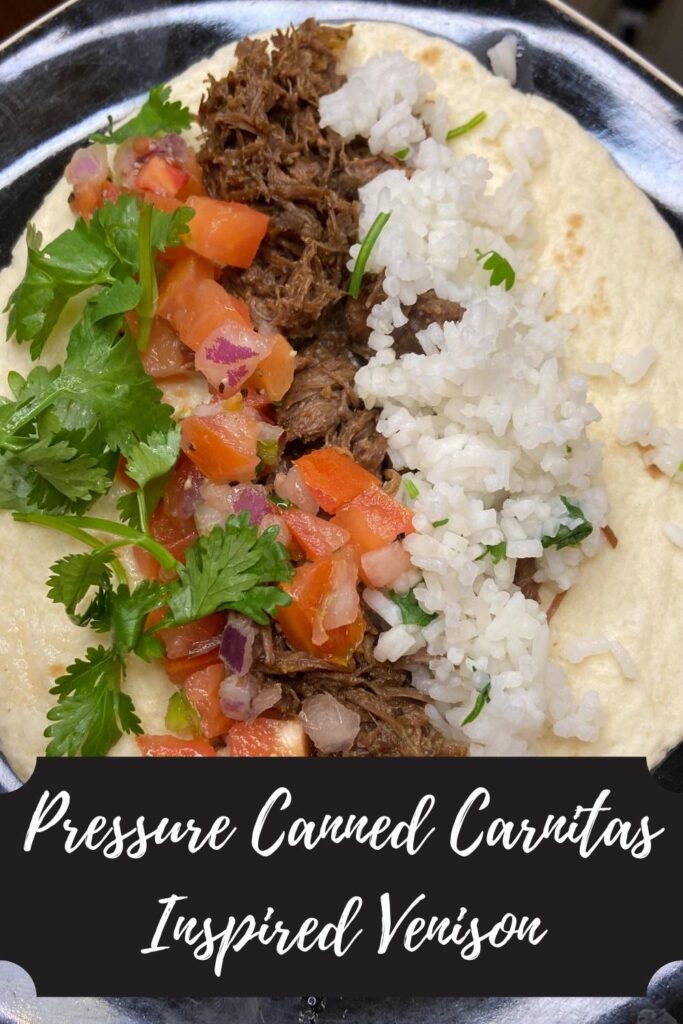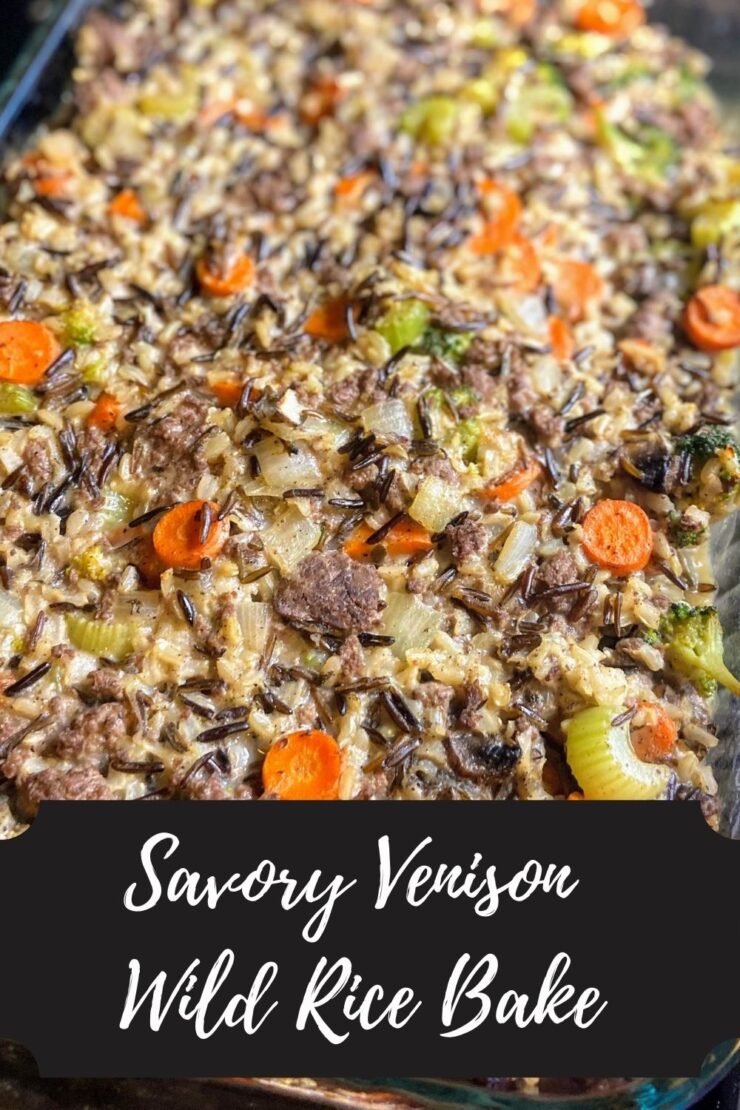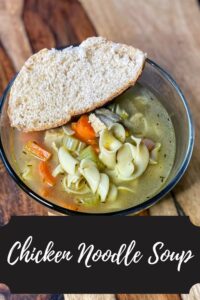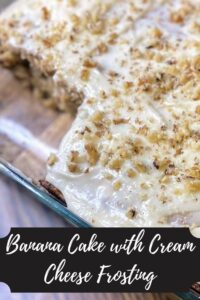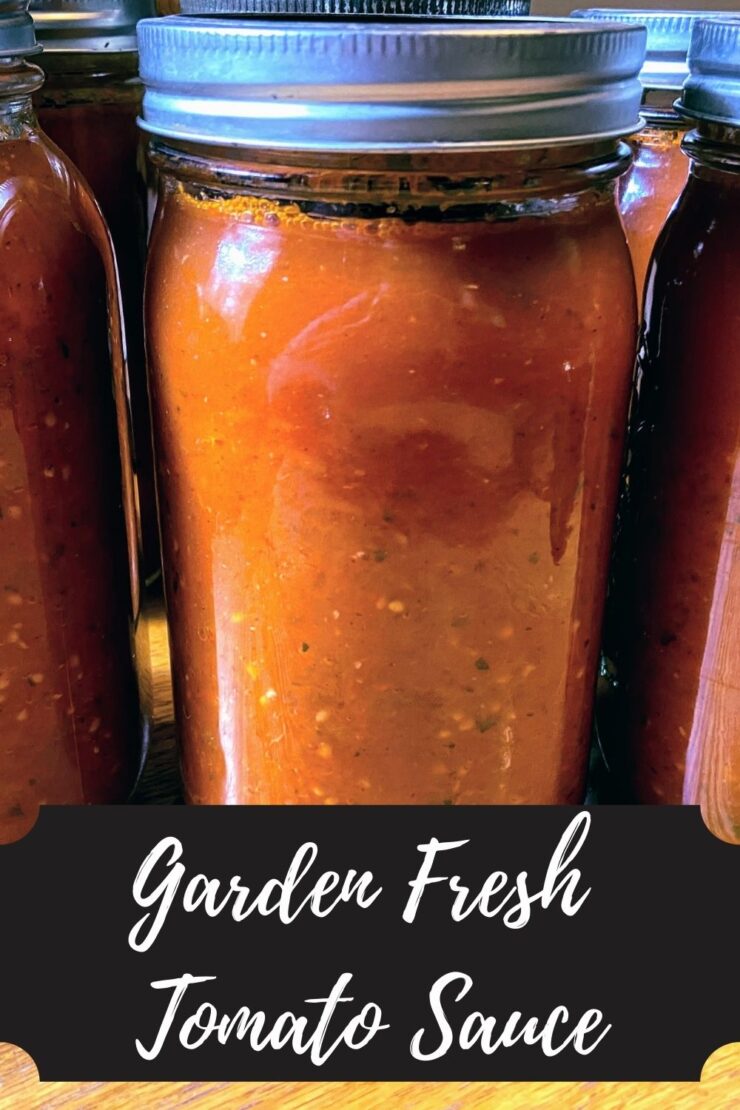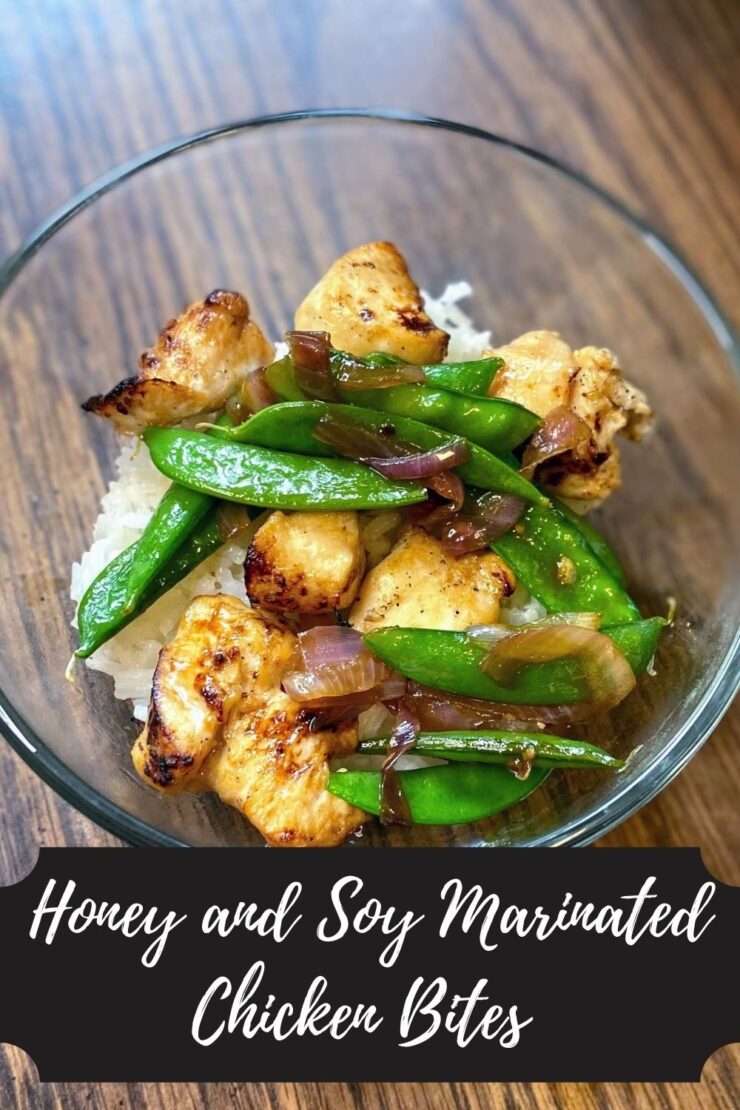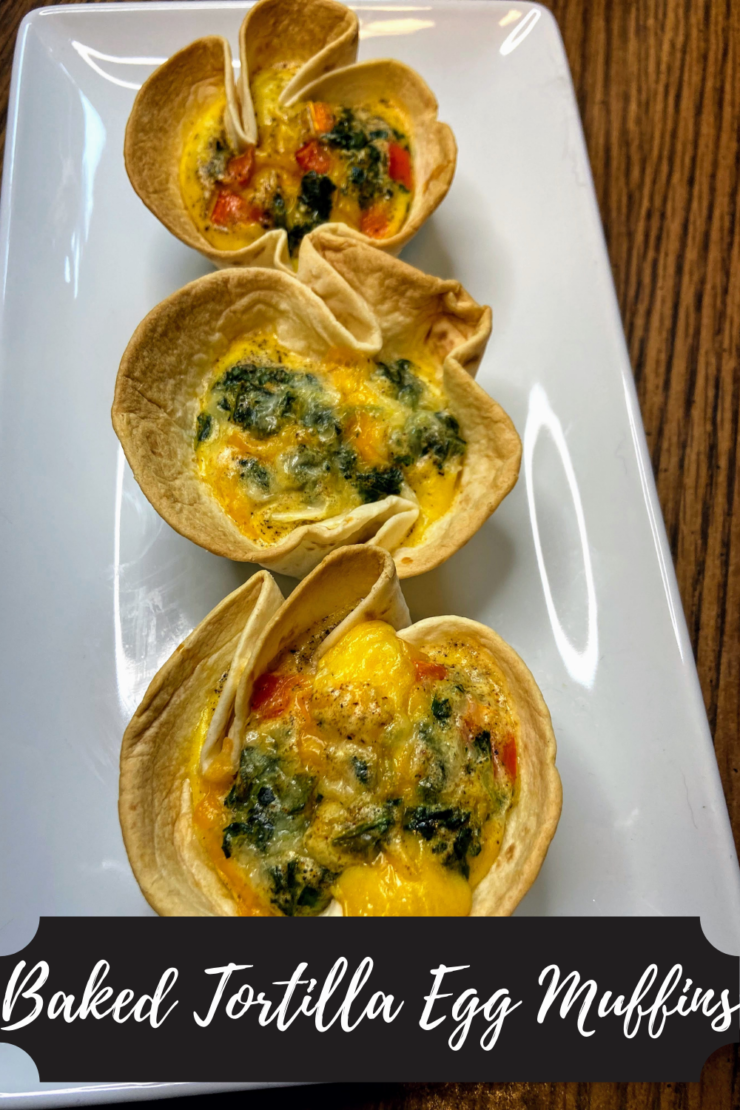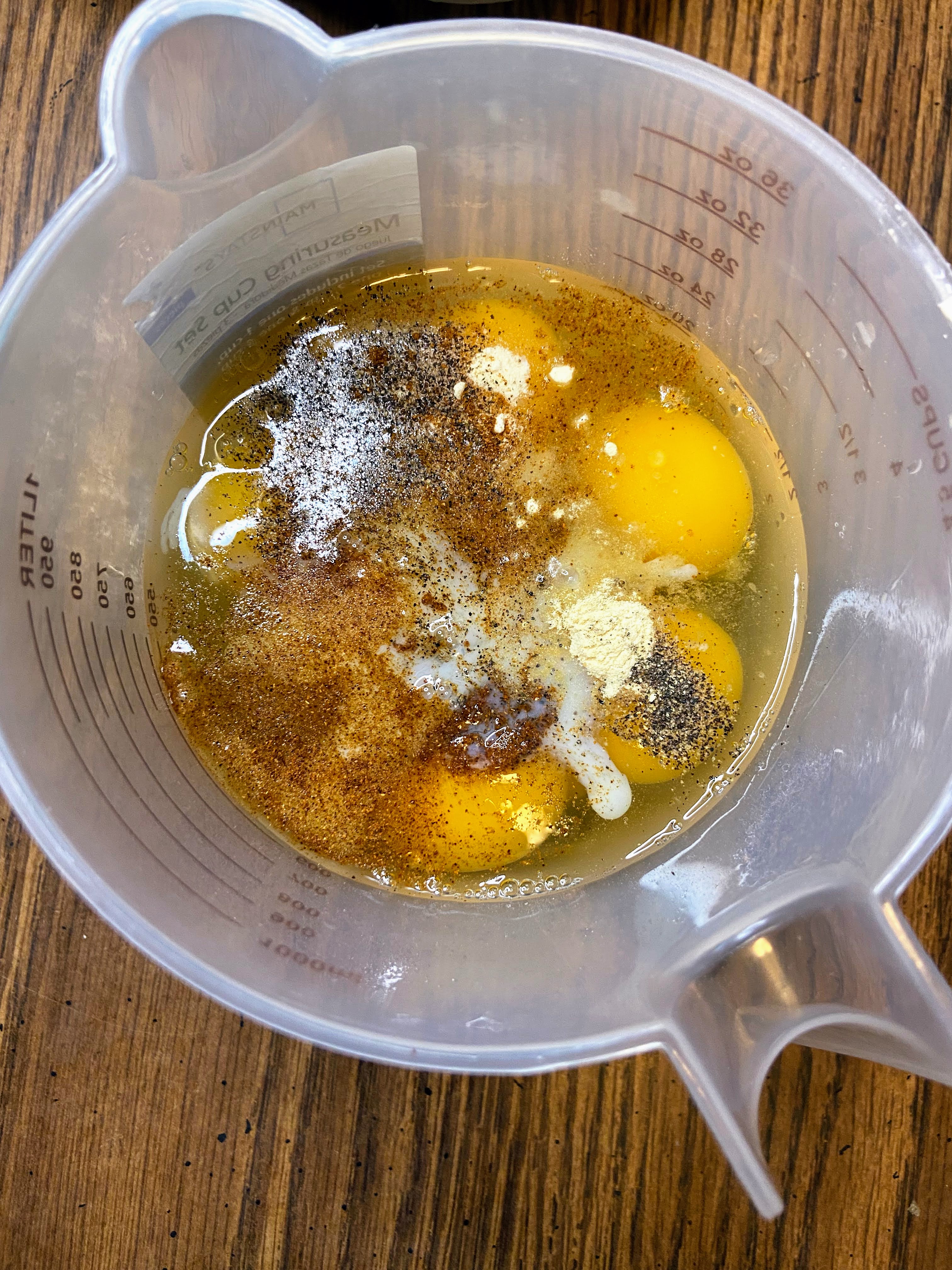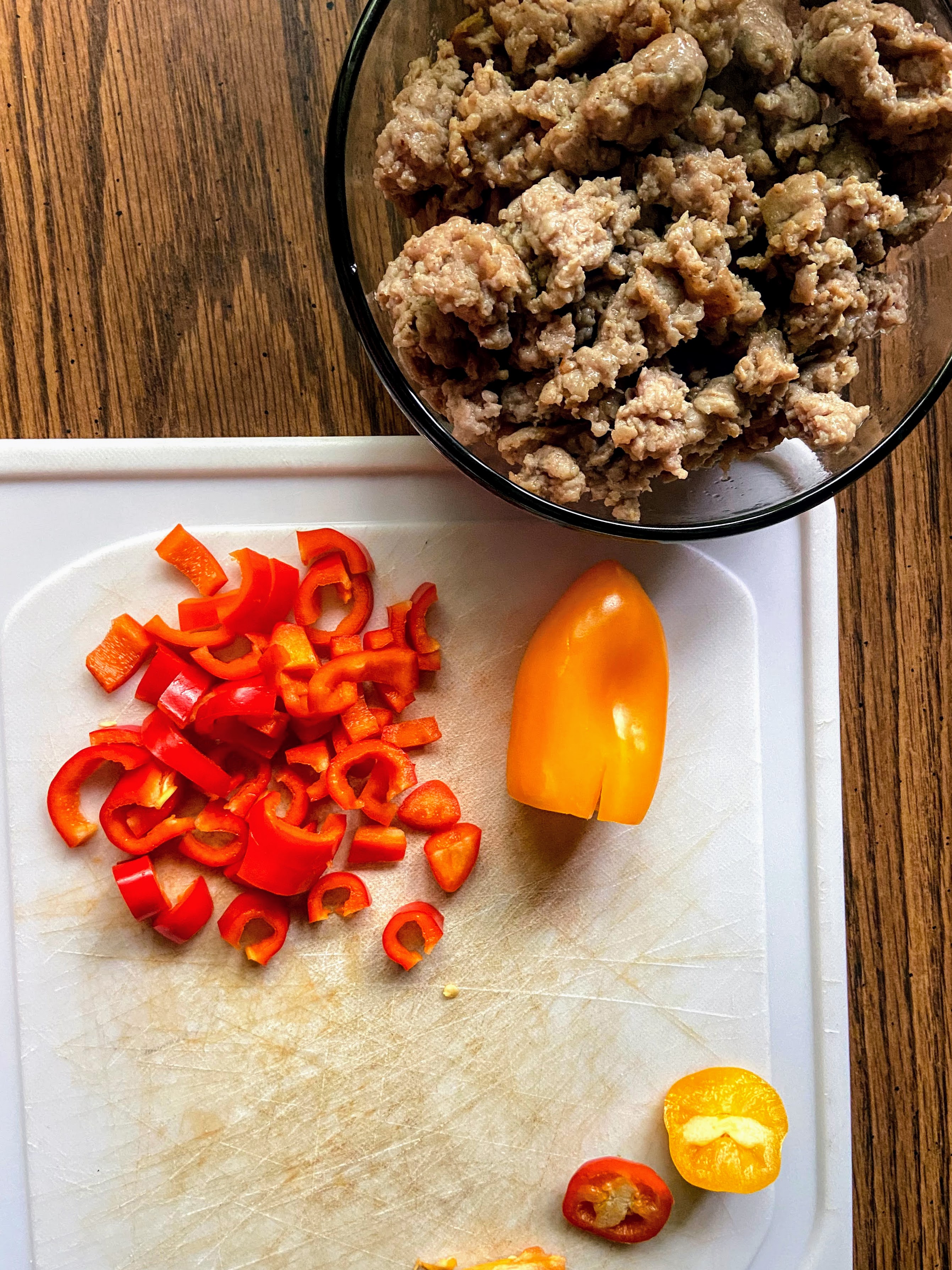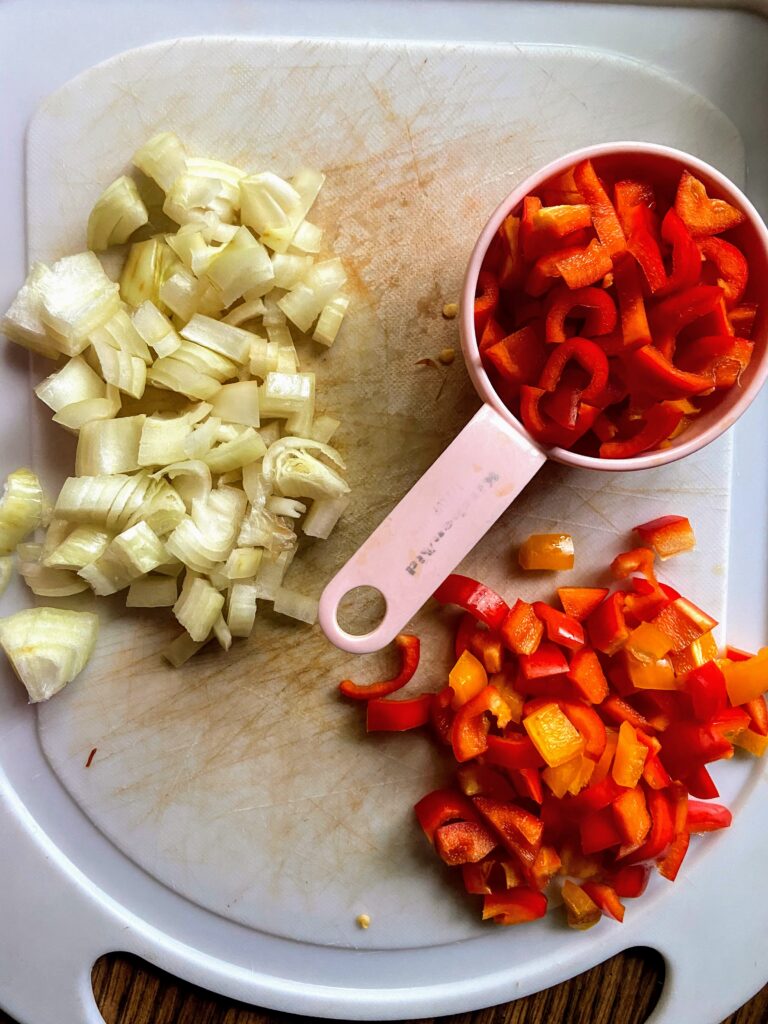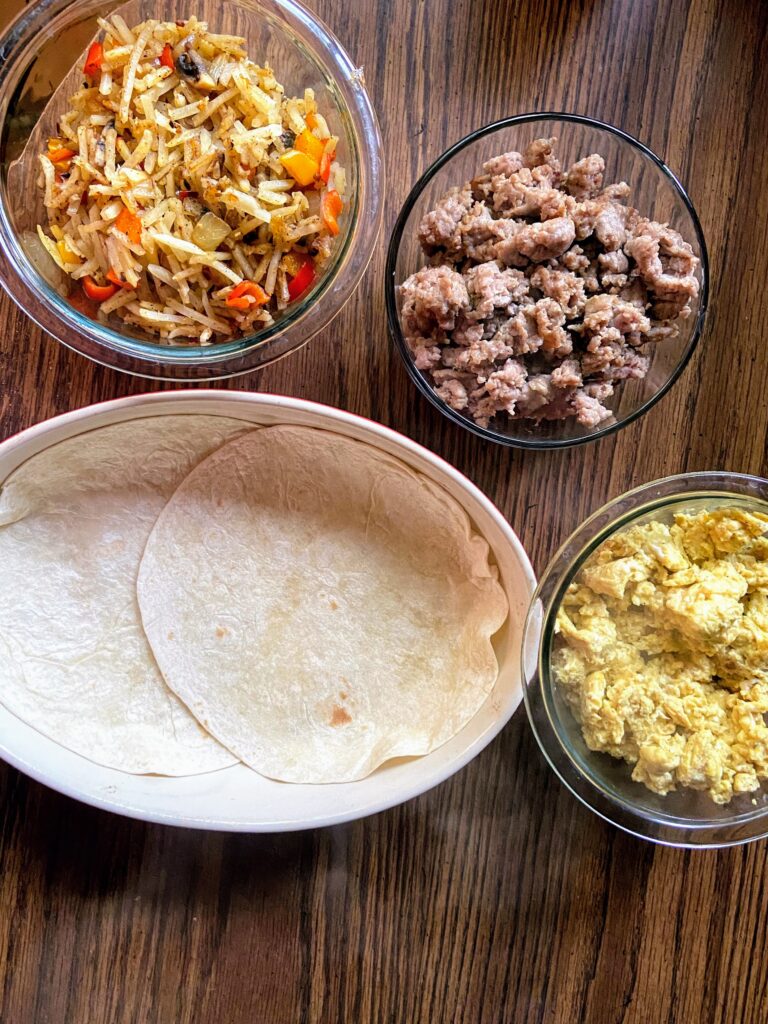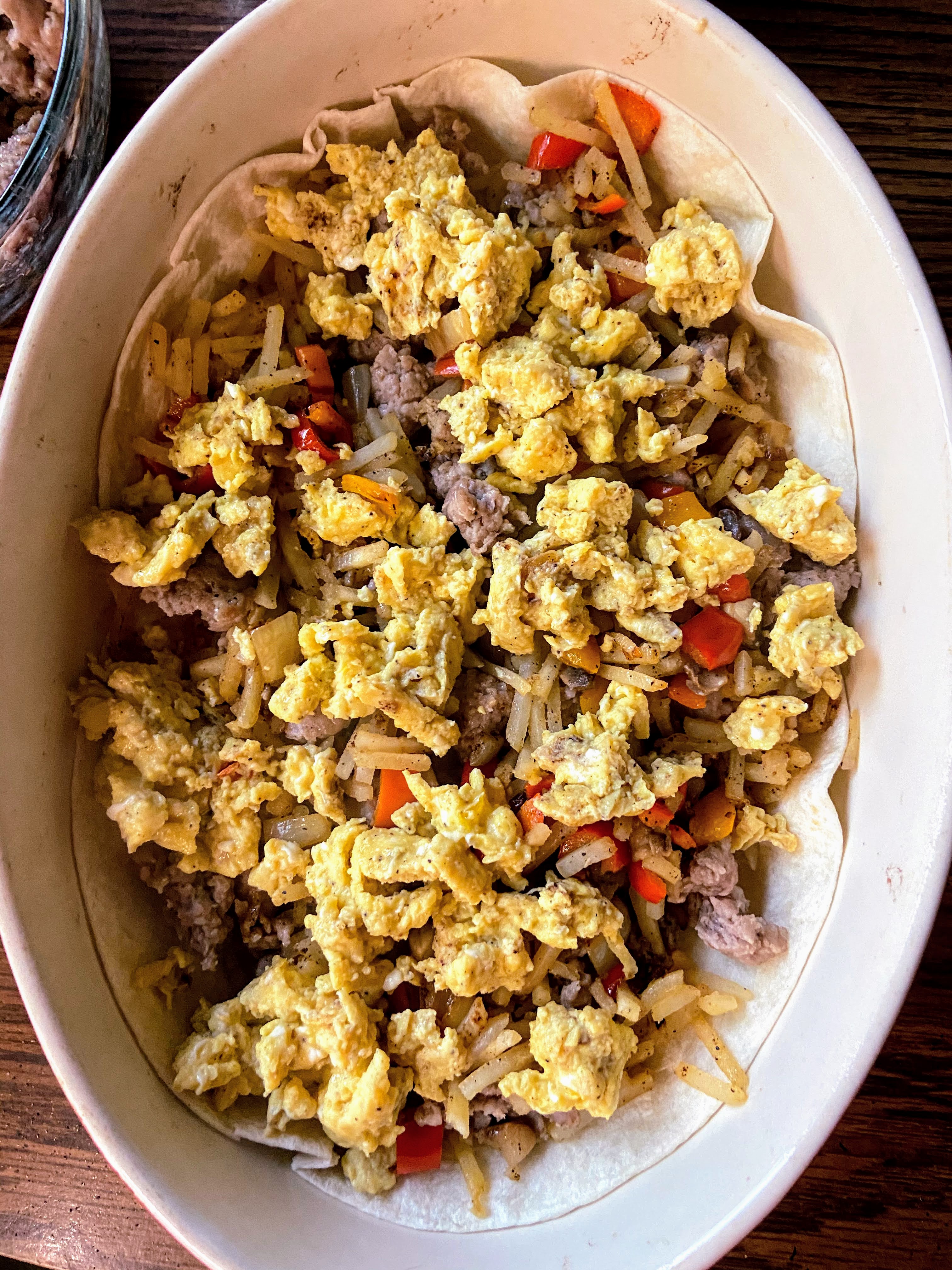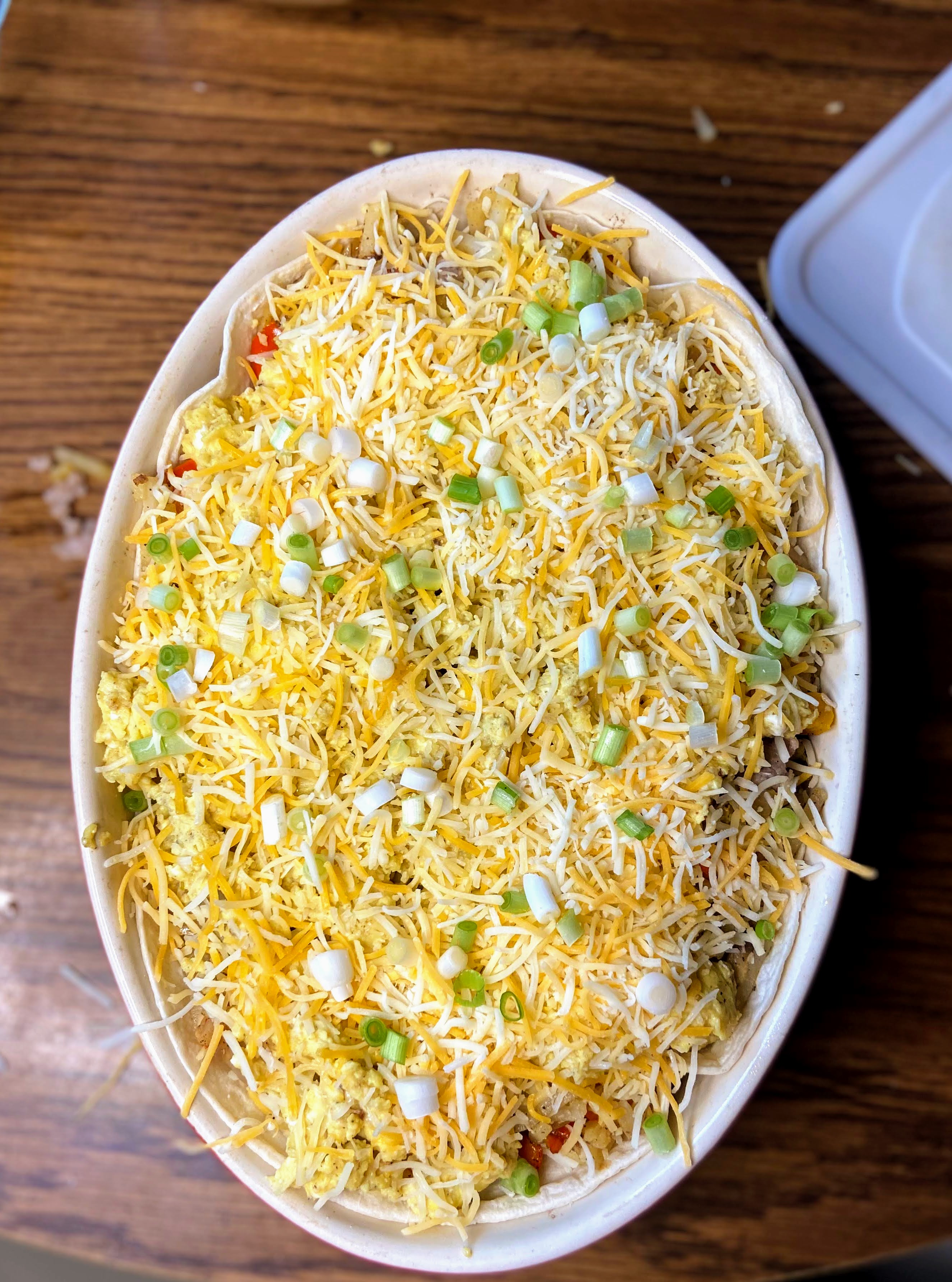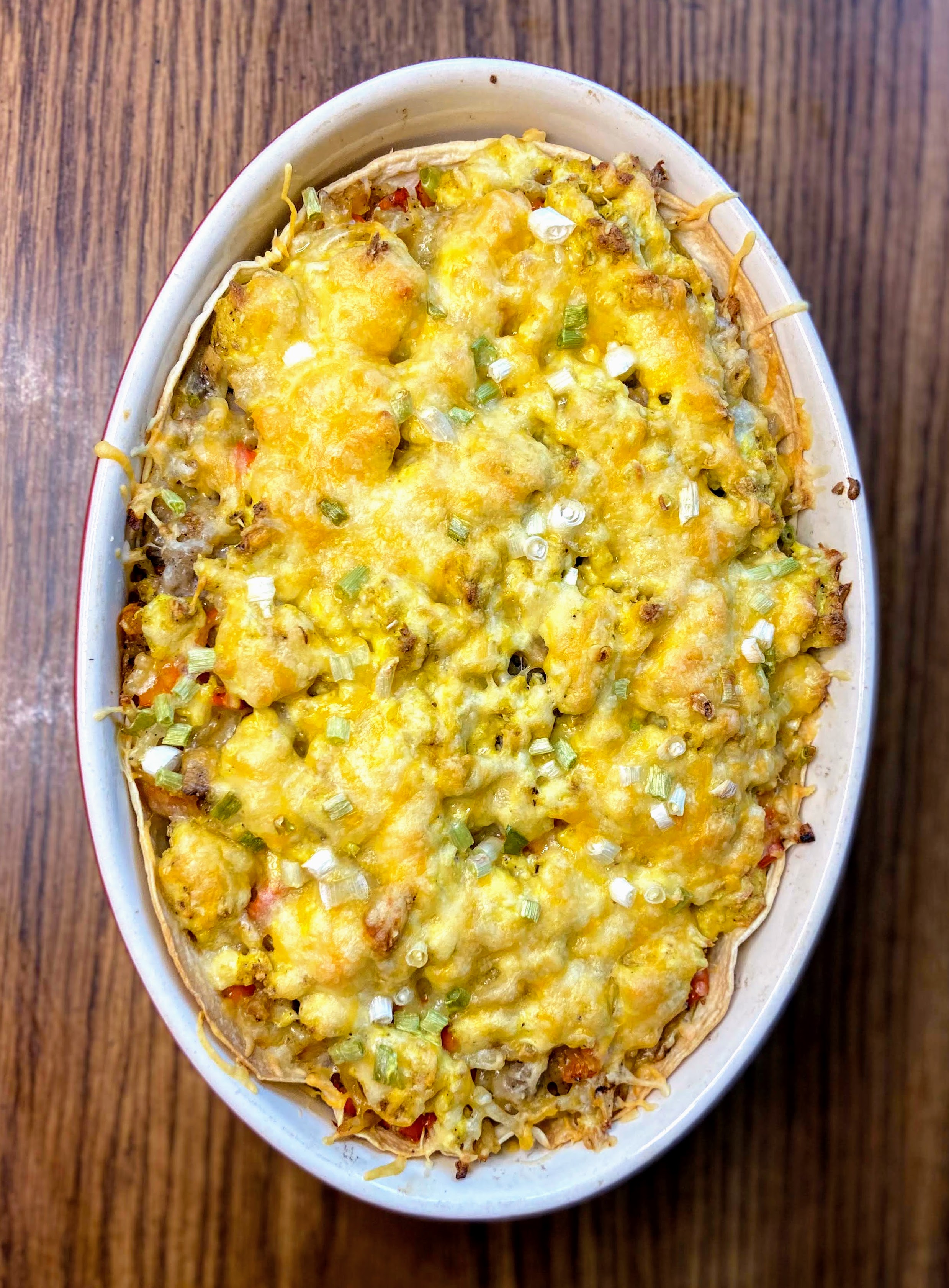When I cook, I go all in. Over the years, I have become determined to avoid adding overly processed food and box dinners for my family. I don’t always succeed (let’s be honest, that blue box of Mac and Cheese is pretty dang good sometimes!), but I would say that the food that I cook is from scratch, oh, I don’t know, 70% of the time? So when my kids requested Tuna Helper a few months ago, I was determined to make it my own. After a little experimentation, I came up with a great, simple alternative to the boxed stuff and I can’t wait to share my one pot tuna and broccoli skillet.
This tuna and broccoli skillet can come together in just over 30 minutes AND you can make it by only dirtying four dishes:
- A large skillet or saucepan
- A cutting board
- A knife
- A strainer
That’s it. Everything will be cooked in the same pan (winning!) and after you strain the noodles, you can put the vegetables on top while you make the roux. I love to avoid extra dishes as much as possible (we don’t have a dishwasher so everything is done by hand in our house).
Ready to get cooking for a weekend or weeknight meal? I can’t wait to share!
Your Ingredients
- 12 ounces tri-colored rotini (or any other pasta shape your family loves)
- 4 cups broccoli, chopped
- 1 ½ tablespoons olive oil
- ½ cup diced onion
- ½ tablespoon garlic
- 1 ½ cups sliced mushrooms
- ¾ teaspoon pepper, divided
- ½ teaspoon salt
- 2 tablespoons flour
- 2 tablespoons butter
- ½ cup half and half or heavy cream (whole milk would work too!)
- 1 ⅓ cup skim milk
- 2 cans tuna
Your Steps to Tuna and Broccoli Skillet
In a large saucepan, cook rotini according to package directions. Drain and set aside in the strainer.
Meanwhile, heat the olive oil in the large saucepan. Once hot, add onion and garlic. Cook over medium heat for 3 minutes. Add broccoli, mushrooms, salt, and ½ teaspoon pepper. Cook until softened, approximately 5-8 minutes. Remove from pan, spooning into strainer, on top of noodles (See, I am all about avoiding extra dishes!).
Add butter to the saucepan. Melt over medium-low heat. Once fully melted, stir in flour, preferably with a whisk. Continue to whisk as the flour browns slightly. Very slowly, stir in half and half, ¼ cup at a time. Then stir in the skim milk, again, very slowly, ¼ cup at a time. (This is hard for me to do. I want to mix it too fast and I get impatient. Don’t be me. Ha.) Sprinkle in additional ¼ teaspoon of pepper, if desired.
Once milk and half and half have been fully incorporated, slowly stir in noodles and vegetables. Add drained tuna and stir until well combined. That’s it! Serve it up. In our house, we would serve it with additional vegetables that we cooked in these Ziploc Steam Bags. We always keep a stock of our favorite frozen vegetables and cook them up in 6 minutes flat!

Chopped up those veggies! 
Soften them up! 
Don’t make more dishes! 
Getting my roux on. 
I was so patient this time! 
Add the tuna 
and stir it up! 
Tuna and Broccoli Skillet!
Looking for dinner inspiration ideas? Check out my cooking page! Maybe you need dessert. Check out the baking page!
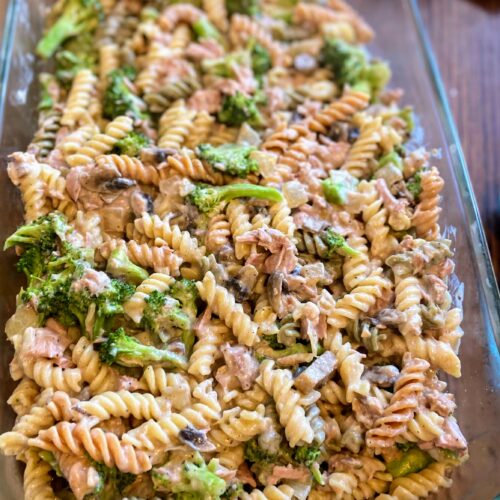
Tuna and Broccoli Skillet
Ingredients
- 12 ounces tri-colored rotini
- 4 cups broccoli chopped
- 1 ½ tablespoons olive oil
- ½ cup diced onion
- ½ tablespoon garlic
- 1 ½ cups sliced mushrooms
- ¾ teaspoon pepper divided
- ½ teaspoon salt
- 2 tablespoons flour
- 2 tablespoons butter
- ½ cup half and half or heavy cream
- 1 ⅓ cup skim milk
- 2 cans tuna drained
Instructions
- In a large saucepan, cook rotini according to package directions. Drain and set aside in the strainer.
- Meanwhile, heat the olive oil in the large saucepan. Once hot, add onion and garlic. Cook over medium heat for 3 minutes. Add broccoli, mushrooms, salt, and ½ teaspoon pepper.
- Cook until softened, approximately 5-8 minutes. Remove from pan, spooning into strainer, on top of noodles.
- Add butter to the saucepan. Melt over medium-low heat. Once fully melted, stir in flour, preferably with a whisk. Continue to whisk as the flour browns slightly.
- Very slowly, stir in half and half, ¼ cup at a time. Then stir in the skim milk, again, very slowly, ¼ cup at a time. Sprinkle in additional ¼ teaspoon of pepper, if desired.
- Once milk and half and half have been fully incorporated, slowly stir in noodles and vegetables. Add drained tuna and stir until well combined. Serve.

